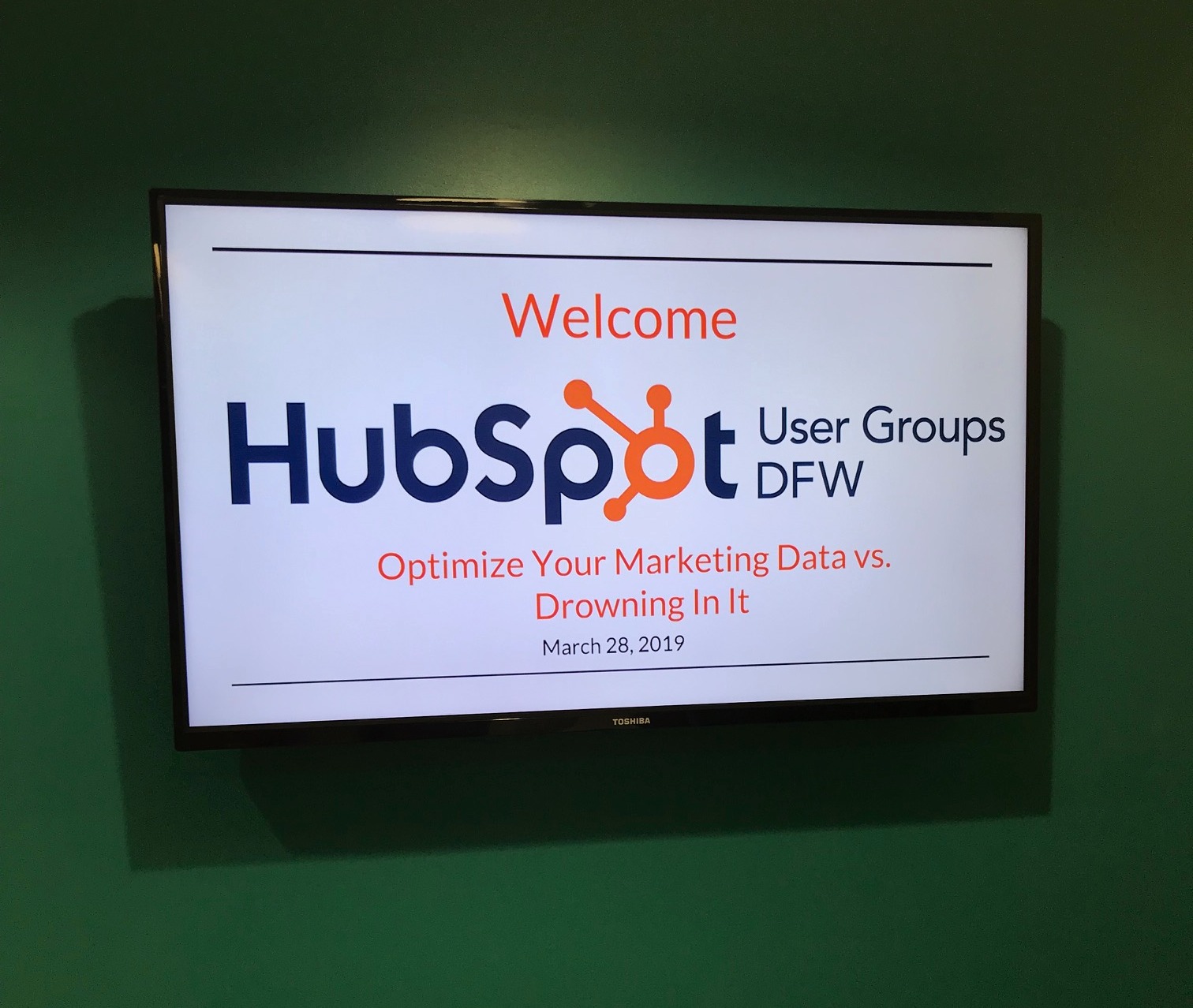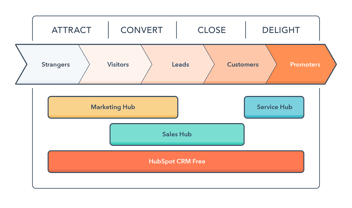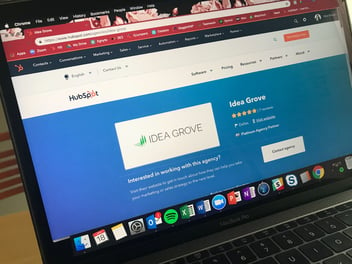Another month, another awesome DFW HubSpot User Group (HUG) event! This month’s event was all about marketing data—specifically, how to optimize and use metrics to diagnose what’s really going on in your marketing. As a digital marketer almost everything you do is tied back to your business’s KPIs, but it’s easy to get caught up in “vanity metrics” that often don’t tell the full story. Here's a quick recap of this month's presentation.
Data vs Analytics: What’s the Difference?
Data refers to individual data points, aka marketing metrics. Analytics puts those data points into context to showcase how marketing efforts are (or are not) meeting objectives. Effective marketing analytics tools gather data from all sources and channels and combine them into a single view.
But how do we know what data to be looking at and what should we be looking for?
Ask: What Problem Are You Trying to Solve?
To measure what matters you first have to figure out what problem you’re trying to solve. So, start with the end in mind.
- What are your business goals? Are your marketing goals aligned with them?
- What campaigns or tactics will be needed to achieve the marketing goals?
- How will you measure success?
- Are your goals realistic?
Use the Funnel to Gain Focus and Clarity
Does any of this sound familiar? Low website visits. No blog or little to no blogging activity. Little to no social media presence. Poor SEO performance across keywords and backlinks.
The top of your funnel is weak. You need to get found online and focus on building your brand with strategies like blogging, on-page SEO and pillar pages, email, social media and paid advertising. Then use the following KPIs to measure for success.
- Website visitors by source
- Social media audience and engagement
- Domain authority and keyword rankings
Our tool recommendations: HubSpot Traffic Analytics, Google Analytics, Moz, and Databox
Having any of these headaches? Low conversion rates across your website. Only one form, and it’s on your contact us page. High bounce rates. A website that isn’t mobile friendly.
The middle of your funnel is weak. If your website visitors aren’t converting into leads you should focus on creating more engaging offers, CTAs, conversational marketing and UX. Your KPIs for the middle of the funnel are:
- Conversion rates (Percentage of visitors that become leads)
- CTA click-through rates
- Bounce rates
- Landing page submission rates
Our tool recommendations: Hotjar, HubSpot page and CTA analytics
If the top and middle of your funnel look solid, but you lack lead nurturing, don’t have a defined sales process, have low conversion rates, or your marketing and sales teams are not aligned, it’s the bottom of your funnel you should be concerned about. At this juncture, start thinking about decision-stage offers, automated lead nurturing, email marketing, and marketing and sales alignment. Pay attention to these metrics:
- Conversion rates from MQLs to customers
- Nurturing email performance (opens & CTRs)
- Closed revenue
Our tool recommendations: HubSpot Sales and CRM, Databox pipeline reports
Measuring the Success of Your Campaigns
Campaigns are a set of deliverables tied together with a theme that support a marketing goal. The elements of a campaign can be your landing pages, thank you pages, emails, blog posts or even CTAs. In a campaign, all of these elements should work together toward common conversion goals. Rather than measuring the success of these elements individually, campaign performance should be looked at as a whole.
HubSpot’s Campaigns tool allows you to do exactly this across everything you create to support your campaign efforts. Metrics include data points like sessions, contacts, influenced contacts, and even closed deals that resulted directly from your campaign.
Tips for Marketing Analytics Success
- Keep it simple: don’t gather too many data points. Hone in on the most important metrics, recognizing those may change over time
- Beware of vanity metrics: open rates, likes, visitations
- Domain authority is relative. A domain authority of 40 may not be bad. If it’s on par with your competitors and other industry standards, it could actually be great
- Have enough data to support changes
- Automate as much as possible!
If you missed this month’s event, April’s is just around the corner! Join us on April 23 for another happy hour. This month we’re bringing in Senior HubSpot Academy professor Kevin Dunn to talk all things video! Seating will be limited at this session, so be sure to RSVP soon. If you’re not yet a member of the DFW HUG, it’s free to join and all of our events are free to attend.
But Wait, There’s More!

Last week Idea Grove was named one of HubSpot’s top digital agencies in Dallas. As a certified Platinum HubSpot partner, we are so excited to receive this distinction and to continue helping our clients get the most out of their HubSpot tools.

 4 min read
4 min read







 1 min read
1 min read

